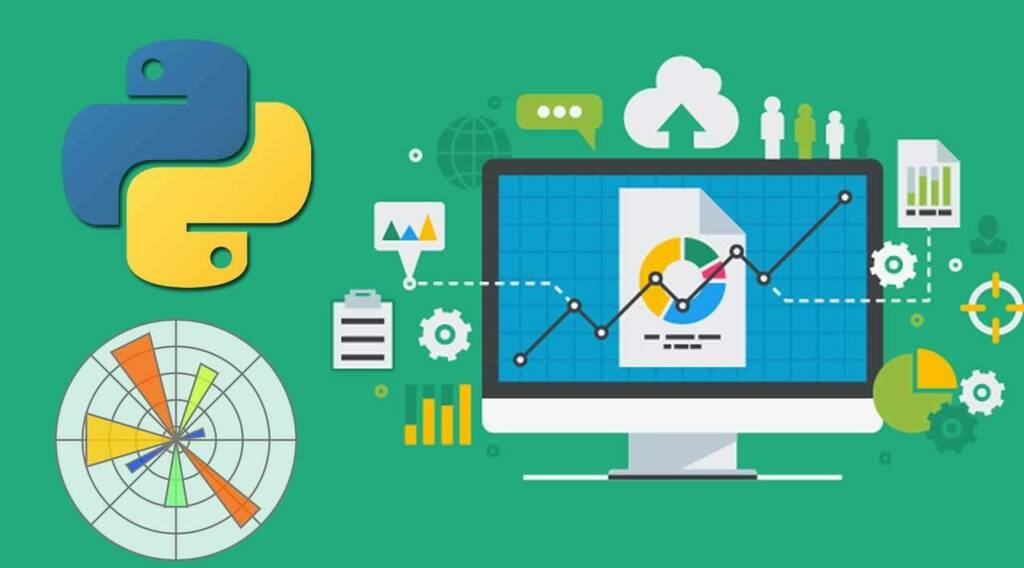Python is a widely used programming language with a reputation for being straightforward, readable, and flexible. Web development, data science, and machine learning are just a few of the several fields in which it is employed. Python has gained popularity as a programming language in recent years, especially for creating mobile apps.
This article gets into the frameworks for developing mobile apps in Python, giving you the knowledge you need to navigate this always-changing industry.

Understanding the landscape of Python mobile app development
Choosing the right framework is of utmost significance when starting the Python-based mobile app development journey. Similar to growing flowers, the success of this procedure depends on the harmony of the surrounding environment. Similar to growing a flower in its favored climate, choosing a proper mobile app development framework results in easier progress. Contrarily, mismatched frameworks place additional demands on the user, similar to trying to grow a flower in an unfriendly environment. Finding a framework that perfectly fits the needs of your project while maximizing time and resources is the key.
Frameworks for developing mobile apps in Python:
The Importance of Unveiling Frameworks:

- The Kivy Framework: Promoting Cross-Platform Excellence With the help of the Python mobile app development framework Kivy, developers may create cross-platform applications. By adopting Kivy, developers are able to create programs that work on Android, iOS, Windows, Mac OS X, and Linux-based gadgets
- The BeeWare framework brings together a variety of tools for Python app development, echoing Kivy’s core ideas. The use of native programming languages and libraries by BeeWare distinguishes it from competitors who rely on web technologies and results in better performance. Toga, a native GUI toolkit that mimics the unique characteristics of each operating system, is the basis of BeeWare. BeeWare is an appealing option for people who want Python’s mastery of native performance and aesthetic coherence.
- The Django Framework: Increasing Backend Possibilities Django stands out as a bright star in the huge field of web development. The Model-View-Controller design, which is encased within Python’s beautiful syntax, complements Django’s powerful capabilities. Django’s strength manifests as a backend solution, while not being only a framework for creating mobile apps.
Limitations of Python and How to Get Around Them
- Python’s Performance Problem: An Efficiency Search Python’s perceived slowness, especially when compared to languages like Java, is its Achilles’ heel when it comes to creating mobile apps. This issue stems from Python’s interpreted nature and the associated resource requirements. Smartphones, which are equipped with less powerful hardware than current PCs, have performance issues.
- Problems with Python’s Usage: A Cycle of Stagnation The mystery surrounding Python’s restricted use in the creation of mobile apps feeds a vicious circle. Underdeveloped frameworks result from a lack of interest in this market. Consequently, inadequate tools make it difficult to create mobile apps that use Python. To get over this obstacle, there has to be a general upsurge in innovation and curiosity, which will lead to the development of frameworks that can accommodate various mobile app needs.
- Integration Difficulty: The Python Compatibility Puzzle Even though it is simple and beautiful, Python’s syntax can be difficult to integrate with other languages’ code bases. The unique structure of the language is the cause of this integration difficulty. To overcome this challenge, careful planning and execution are required, resulting in a smooth integration of Python-powered components with existing codebases.
Python’s merits in the development of mobile apps
Despite the challenges faced while creating mobile apps, Python’s benefits are still clear, demonstrating its viability for programmers looking to create exceptional applications.
- Flexibility and Tool Abundance: Python’s large library and toolkit make it simple to quickly include new features into mobile apps, which enhances their usability and appeal.
- Efficiency in Development: Python’s interpreted architecture speeds up development and testing, enabling programmers to iterate quickly and simplify the app development process.
- Supportive Community: The passionate Python community depends on cooperation and help. This dynamic ecology reduces obstacles and speeds up problem-solving, increasing efficiency.
Conclusion
In conclusion, Python’s rise in mobile app development is characterized by both successes and difficulties. Frameworks like Kivy, BeeWare, and Django have shown how the language may grow beyond its constraints. Developers may make use of Python’s adaptability to create engaging and excellent mobile apps by embracing the language’s strengths and ingeniously navigating around its drawbacks. Python’s journey in mobile app development promises to be one of innovation and ongoing improvement as the landscape continues to change.
If you’re thinking about creating a mobile application, Python is a fantastic language to take into consideration. It is a strong and adaptable language that can be used to create a wide range of mobile apps.
For the best mobile app development company in Dubai, United Arab Emirates, get in touch with MAQ Computer Services. Offering specialized solutions based on your needs and specifications, we provide services for developing Android, iOS, and hybrid apps.








